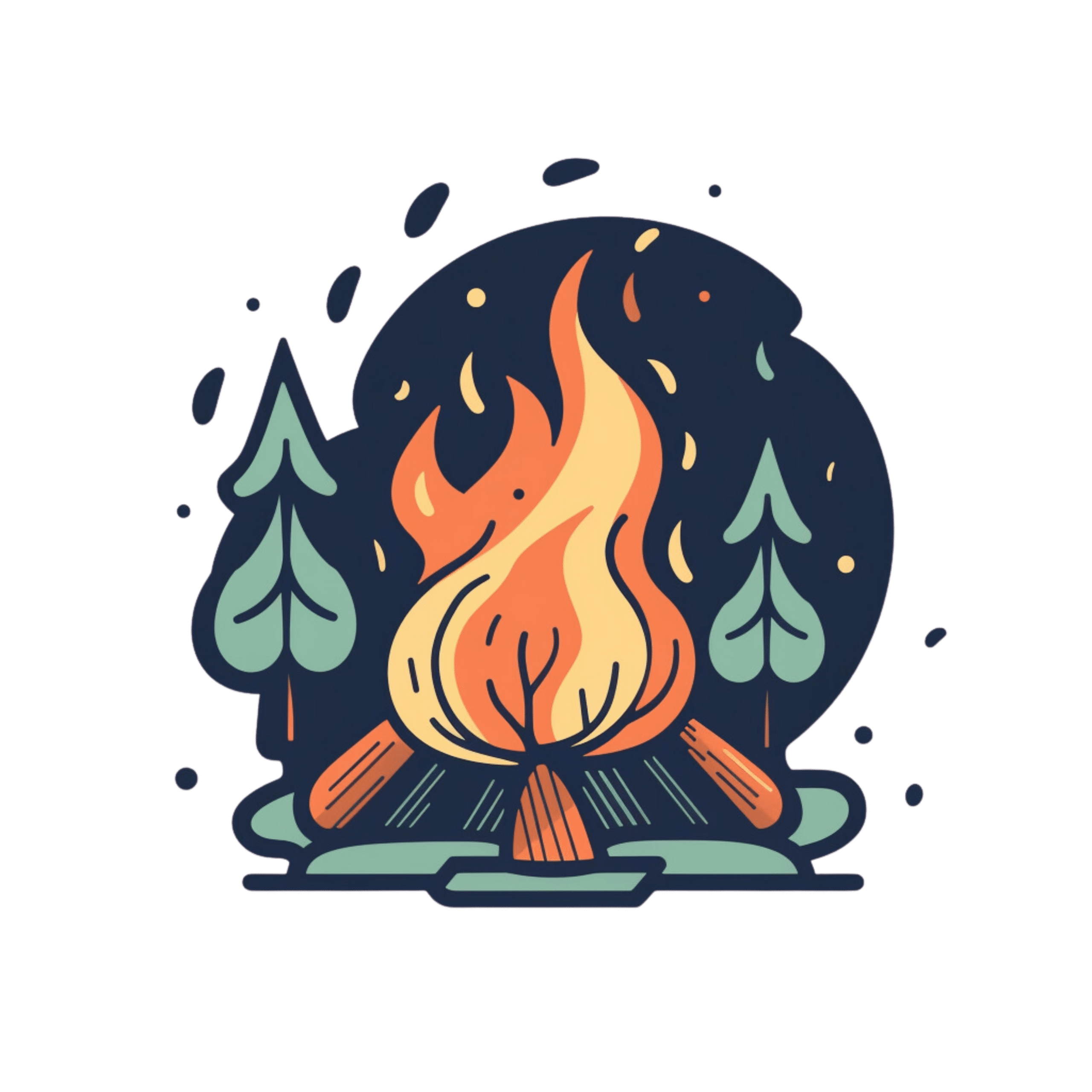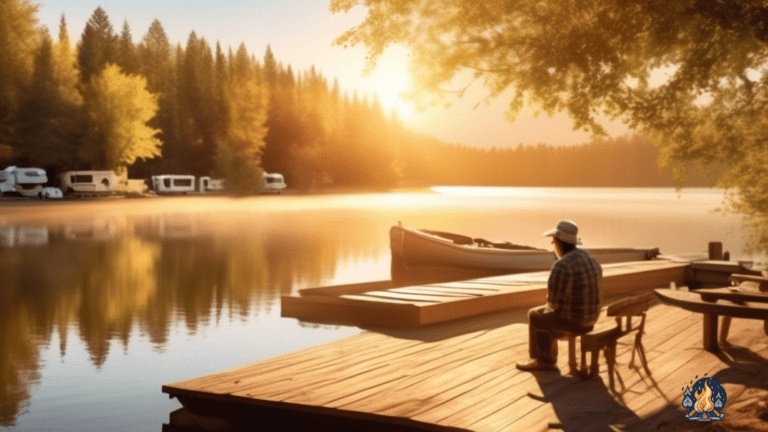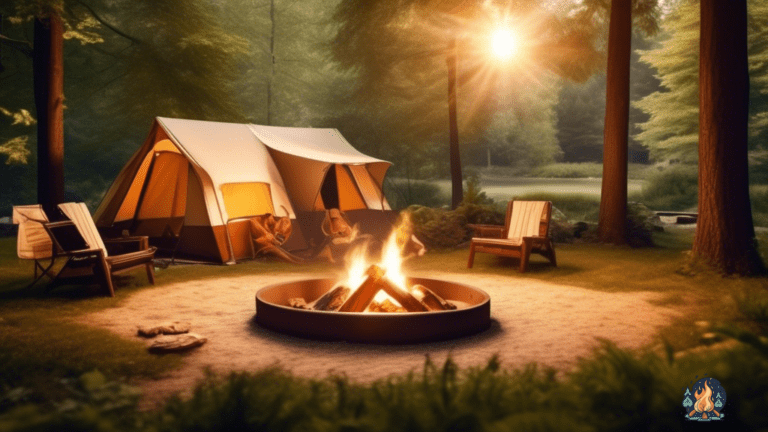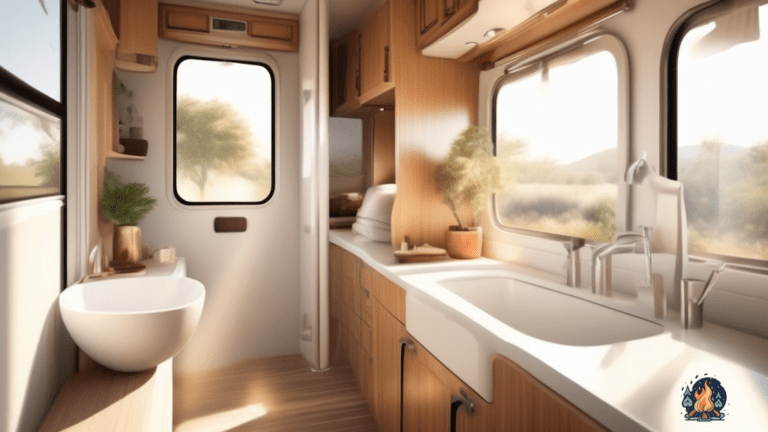Tips For Safe Handling Of Campfire Firewood
by Kevin Fairbanks • Updated: January 30, 2024
Learn how to safely handle campfire firewood and prevent any accidents during your outdoor adventure. Click now for expert tips on firewood safety!
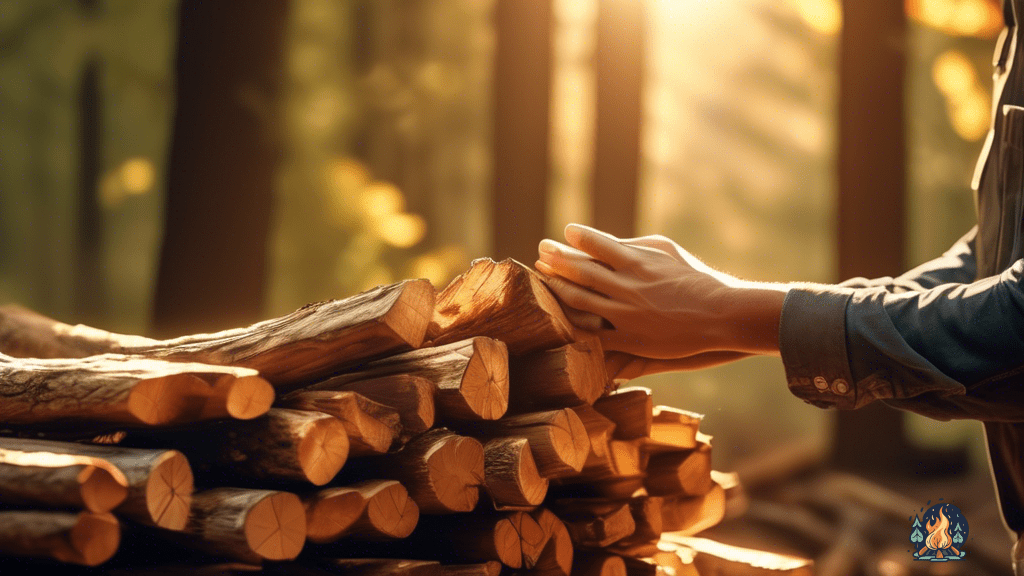
Are you planning a camping trip and looking forward to cozy nights around the campfire? Well, before you start gathering firewood, it’s important to know how to handle it safely.
In this article, we will share some valuable tips for safe handling of campfire firewood. So, grab your marshmallows and get ready to learn how to be a firewood handling pro!
First things first, choosing the right firewood is essential. You don’t want to be stuck with damp or green wood that refuses to burn. Trust me, trying to start a fire with wet wood is like trying to teach a fish how to ride a bicycle – it’s just not going to happen!
Look for dry and seasoned firewood that will easily catch fire and provide a warm and crackling campfire experience. Once you’ve got your perfect firewood, it’s time to store it properly. Follow these tips, and you’ll have a blazing fire in no time!
Key Takeaways
- Choose dry and seasoned firewood, looking for gray wood with cracks on ends
- Stack firewood neatly to prevent moisture buildup and mold, ensuring air circulation and stability
- Handle firewood safely by watching your step, wearing gloves, and placing it gently into the fire pit
- Dispose of firewood properly by breaking it down, burning it, or repurposing it, following safety precautions and campground regulations
Choosing the Right Firewood
As you sit around the crackling campfire, you can’t help but wonder which type of firewood is the best to choose for a safe and enjoyable experience.
Well, my friend, let me enlighten you on the art of selecting the perfect firewood.
First and foremost, you want to avoid using any wet or damp wood. Trust me, trying to start a fire with soggy logs is like trying to build a sandcastle with pudding – it’s just not going to work. So, make sure you choose dry firewood that is seasoned and ready to burn.
Look for wood that is gray and has cracks on the ends, like the wrinkles of a wise old tree. This is a sign that the wood has been properly dried and is ready to unleash its fiery potential.
Now, let’s talk about the type of wood you should be looking for. You want wood that burns easily, like a match on a windy day. So, stay away from hardwoods like oak or maple. They may be strong and sturdy, but they take forever to catch fire. Instead, opt for softwoods like pine or fir. These beauties will ignite faster than a firework on the Fourth of July. Plus, they produce a pleasant aroma that will make you feel like you’re lounging in a forest spa. Just be careful not to overdo it with the softwoods, as they burn faster and may require more frequent feeding to keep your fire roaring.
So, there you have it, my friend. The secrets to choosing the right firewood for a safe and enjoyable campfire experience.
Remember, dry and seasoned wood is your best friend, and softwoods are the life of the party.
Now, go forth and conquer the world of firewood selection with confidence and a touch of humor.
Happy burning!
Storing Firewood Properly
When storing firewood properly, make sure to stack it in a neat and organized manner to allow for proper air circulation and prevent moisture buildup. You don’t want your firewood to turn into a breeding ground for mold and fungi, do you? Trust me, you don’t want to wake up one morning to find your firewood throwing a wild party with mushrooms and slime.
So, stack it like a Jenga pro, making sure the pieces are stable and not leaning all over the place. And don’t forget, firewood needs some breathing room too, just like you after a big meal. Give it some space and let it air out, because no one likes a suffocated piece of firewood.
Now, let’s talk about location, because where you store your firewood matters. You wouldn’t want to place it right next to your swimming pool, unless you enjoy the idea of having a soggy bonfire. And let’s be honest, no one wants to roast marshmallows over wet wood, unless you’re into the whole "charred and waterlogged" flavor.
So, find a nice dry spot, away from any potential water sources. Oh, and make sure it’s not too close to your house either. The last thing you want is to wake up in the middle of the night, thinking your house is on fire, only to realize it’s just your firewood getting a little too cozy with the walls. Safety first, folks!
Handling Firewood Safely
To ensure a pleasant experience, it’s important to handle firewood with care while enjoying a campfire. Here are some tips to help you handle firewood safely and avoid any mishaps:
- Mind your toes!: When carrying firewood, make sure to watch your step and avoid dropping it on your toes. Those little piggies need to stay intact for all the s’mores you’ll be enjoying later. So, take it slow and steady, and give your feet the love they deserve.
- Beware of splinters: Firewood can be rough and splintery, so it’s a good idea to wear gloves when handling it. Not only will this protect your hands from any sharp edges, but it will also give you that extra confidence to show off your expert fire-building skills. Plus, you’ll have soft and smooth hands to impress your campfire companions.
- Play it safe: While it may be tempting to show off your lumberjack skills and toss firewood into the fire with gusto, it’s important to handle it with caution. Make sure to place the firewood gently into the fire pit to avoid any flying embers or accidental injuries. Remember, safety first, and then you can go back to impressing everyone with your fire-starting prowess.
So, keep these tips in mind, and you’ll be able to handle firewood like a pro while keeping yourself and others safe.
Happy camping and may your campfire be filled with warmth and laughter (and maybe a marshmallow or two)!
Preventing Invasive Species Spread
Preventing the spread of invasive species is crucial when it comes to handling firewood for your campfire. You don’t want those sneaky little critters hitching a ride on your firewood and wreaking havoc on the local ecosystem.
So, here’s the deal: always use locally sourced firewood. I know, I know, it may be tempting to bring that fancy firewood from far away, but trust me, it’s not worth it. Stick to the local stuff, and you’ll be doing your part in preventing the invasion of unwanted species.
Now, let’s talk about the transportation of firewood. It’s like a game of "don’t drop the bug-infested log!" Seriously, those invasive pests can hide inside the wood, just waiting for the perfect moment to escape and infest a new area.
So, when you’re moving firewood, be sure to cover it up with a tarp or some kind of protective covering. It’s like giving the bugs their own little cozy home and sealing them away from the outside world. Plus, it adds a touch of mystery to your firewood transportation game. Who knows what surprises might be lurking under that tarp? It’s like a forest-themed version of "What’s in the Box?" Just remember, the answer is never "a cute little bunny."
What Kind of Firewood Is Best for Using in a Fire Ring?
When deciding what type of firewood to use in a fire ring, it’s important to prioritize safety. Hardwoods like oak or maple burn long and hot and are ideal for a fire ring. Softwoods like pine or cedar should be avoided, as they can pop and crackle, posing a risk to those who want to safely use the fire ring.
Disposing of Firewood Correctly
Properly disposing of firewood ensures a clean and safe campsite for everyone. So, when you’re done with your firewood, make sure you follow these three guidelines:
- Be a hero, not a zero: Instead of leaving your firewood behind, take some time to break it down into smaller pieces and scatter it around the campsite. This not only helps to prevent the spread of invasive species but also ensures that future campers won’t trip over your abandoned firewood and end up face-first in the dirt. Plus, it’s a great way to show off your lumberjack skills and impress your camping buddies.
- Burn it up, baby: If you’re unable to break down your firewood or you simply have too much to scatter around, the next best option is to burn it. Just make sure to follow the proper safety precautions and check with the campground regulations before starting a bonfire. And remember, the bigger the fire, the more epic your camping tales will become. Just be sure not to burn down the entire forest while you’re at it.
- Give it a new purpose: If you’re feeling particularly crafty, you can repurpose your firewood into something useful. Build a rustic shelf, create a makeshift bench, or even fashion a wooden sculpture of Bigfoot to scare off any unwanted visitors. The possibilities are endless, and who knows, you might just discover your hidden talent for woodworking. So go ahead, get creative, and turn your leftover firewood into something that will make your campsite the envy of all other campers.
Remember, disposing of firewood correctly not only keeps the campsite clean and safe, but it also gives you the opportunity to showcase your outdoor skills and unleash your inner artist. So, don’t be a lazy camper, take the extra step to properly handle your firewood and leave a positive impact on the camping community.
Happy camping and may the firewood be ever in your favor!
Frequently Asked Questions
How can I determine if the firewood I have chosen is dry enough to safely burn?
Are you ready to ignite the perfect fire? To ensure safety, test your firewood by slapping two pieces together. If they make a sharp, hollow sound, you’ve got dry wood ready to burn!
Are there any particular types of wood that should be avoided when selecting firewood?
Avoid using softwoods like pine or cedar as they can create excessive smoke and sparks. Stay away from treated or painted wood, as the chemicals can release toxic fumes. Stick to dry hardwoods for a safe and cozy campfire experience.
Can I store firewood indoors without the risk of insects or pests infesting my home?
Sure, you can store firewood indoors without attracting pesky insects or pests! Just make sure to keep it elevated and away from walls, and give it a good shake before bringing it inside. No creepy crawlies allowed in your cozy home!
How often should I inspect my firewood for signs of invasive species?
Inspect your firewood regularly for sneaky invaders! You never know when those pesky invasive species will try to hitch a ride. So keep your eyes peeled and give your wood a thorough check-up.
What are some alternative options for disposing of firewood if I am unable to burn it?
If you’re unable to burn your firewood, fear not! You have options. You could repurpose it for DIY projects, use it as mulch in your garden, or even donate it to someone in need. Get creative and save those logs!

Hi, I’m Kevin, a lifelong camping enthusiast and the voice behind Campfire Discoveries. From tent to RV to cabin camping, I’ve explored it all. Join me as we share stories and tips around the campfire, deepening our connection with the great outdoors.
Keep Reading
-
Cast A Line: RV Parks With Fantastic Fishing
Ready to reel in the big catch? Explore these RV parks with fantastic fishing for the ultimate angler’s paradise. Discover where to cast a line and hook your next adventure today!
-
Important Fire Safety Rules For Campfires
Learn the crucial fire safety rules for campfires to protect yourself and your loved ones. Stay safe during your next camping adventure. Click here now!
-
Must-Have Bathroom Essentials For Your RV: Tips For Beginners
Looking to make your RV road trips more comfortable? Check out our beginner-friendly tips and must-have bathroom essentials for your RV. Don’t miss out on a convenient and hassle-free experience. Click here now!
